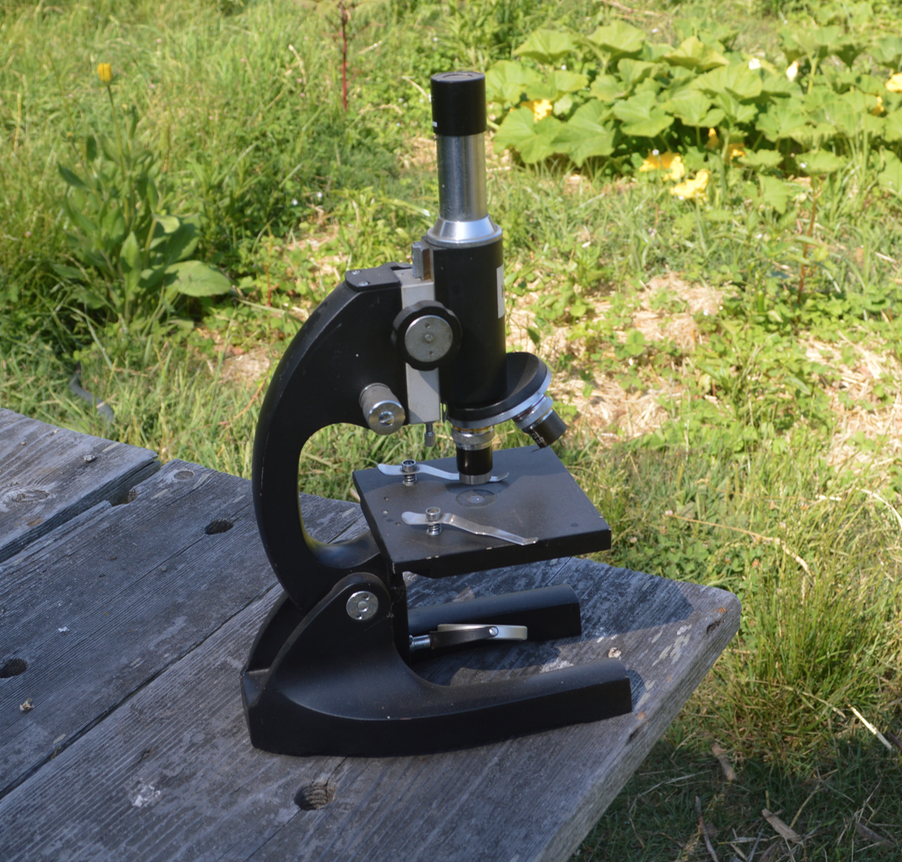
After this lesson, students will be able to:
- Use a microscope to make observations
- Identify pollen as the carrier of genetic material for flowers
- Recognize bees as efficient pollinators
During this lesson, students will:
- Successfully prepare a dry mount slide to observe pollen
- Correctly draw and label pollen on the anther
- Observe pollen-catching adaptations in bee anatomy
AT THE OPENING CIRCLE
- Welcome students and introduce the Microscope Lab as an extension of work they have completed in the classroom.
- Explain that all students will rotate through the lab with their working groups to practice using microscopes by observing pollen and bees.
- Ask students to define pollen and pollinator.
- Divide into working groups, taking the first group to the observation lab while the other groups begin their garden jobs.
AT THE GREENHOUSE
- Have students choose a partner and a microscope station.
- Each pair should have one microscope and 2 clipboards with worksheets.
- Explain to students that in this station each pair will use the microscope to observe pollen on the anther and observe a bee.
- Explain and demonstrate the following:
- Use tweezers to pluck an anther with pollen from a flower and review what an anther is.
- Observe the anther and pollen first on a dry slide.
- Focus the microscope to observe and draw the pollen and anther.
- Keep slide on stage, wipe off anther and pollen, and place bee box on the slide.
-
Invite students to begin their microscope observation.
-
Assist students with plucking out an anther and making a dry slide.
-
Once students have observed and drawn the pollen and anther, assist them in observing the bee from the bee box.
-
When observing the bee species have students look for pollen-catching adaptations.
-
Have students clean off their slides and prepare their microscope station for the next group.
AT THE CLOSING CIRCLE
- Students participate in a seasonal tasting.
All lessons at the Edible Schoolyard Berkeley are developed in collaboration with the teachers and staff of the Edible Schoolyard and Martin Luther King, Jr. Middle School.
Learning Cycle and Think-Pair-Share discussion routine © The Regents of the University of California. All materials created by BEETLES™ at The Lawrence Hall of Science.
This lesson follows the BEETLES Project’s Learning Cycle (Invitation-> Exploration -> Concept Invention -> Application -> Reflection) and uses their Discussion Routines (Think-Pair-Share, Whip-Around). All are highlighted * with an asterisk for easy identification. See the documents BEETLES Discussion Routines and BEETLES Learning Cycle included in Resources below for more information.




